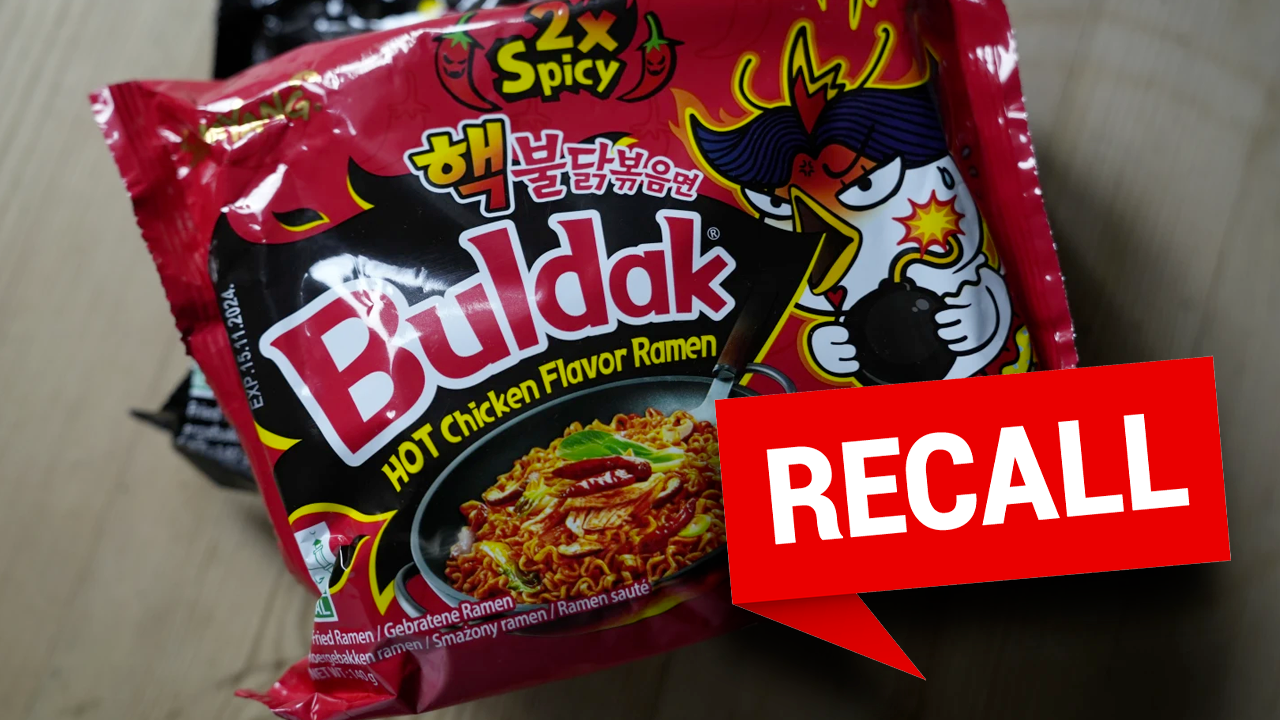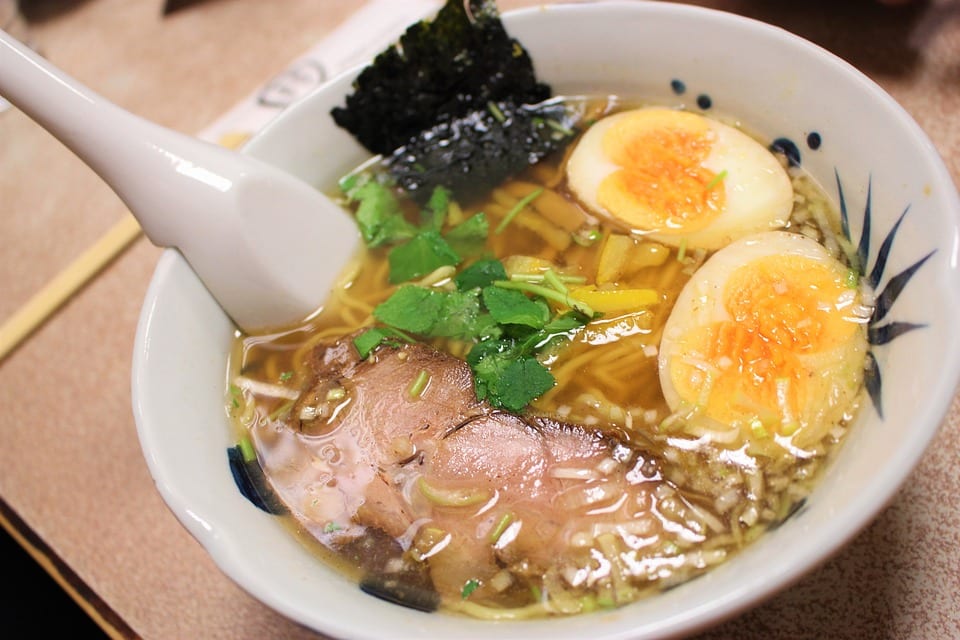Alert: Ramen Recall Brands You Need To Know [Updated!]
Are you truly slurping down comfort, or unknowingly inviting risk with your next bowl of instant ramen? Recent headlines scream of recalls, catapulting consumer safety into the spotlight and demanding a closer look at the beloved instant noodle industry. This article is your deep dive, unearthing the reasons behind these unsettling recalls and arming you with the knowledge to navigate the instant ramen aisle with confidence.
The global appetite for instant ramen has exploded over the last decade, transforming it from a humble pantry staple into a multi-billion dollar industry. This meteoric rise, however, places an immense responsibility on manufacturers to uphold unwavering standards of safety and quality. Food recalls, often triggered by contamination scares, labeling discrepancies, or blatant safety breaches, can expose consumers to severe health hazards, turning a quick meal into a potential crisis. Let's look at what brands were involved.
| Information Type | Details |
|---|---|
| Industry Overview | Instant Ramen/Noodle Market |
| Market Size (2023) | Approximately $50 Billion USD Globally |
| Key Players | Nissin Foods, Maruchan, Samyang Foods, Nongshim, Ottogi |
| Growth Drivers | Convenience, affordability, increasing urbanization, rising disposable incomes in developing countries |
| Main Concerns | High sodium content, use of preservatives, presence of additives, food safety concerns, environmental impact of packaging |
| Recent Trends | Healthier options (low sodium, whole wheat noodles), gourmet/premium instant ramen, plant-based options, sustainable packaging, collaborations with chefs and restaurants |
| Food Safety Regulations | Governed by national food safety agencies (e.g., FDA in the US, EFSA in Europe) regarding contaminants, allergens, labeling, and manufacturing practices. |
| Reference Website | World Food Programme |
This isnt just about a momentary disruption in your noodle routine; it's about the potential ripple effect of compromised food products on public health and the economy. Our aim is to sift through the noise, providing you with clear insights into recent ramen recalls, their underlying causes, and the steps you can take to protect yourself and your family. Whether youre a dedicated ramen connoisseur or an occasional indulger, understanding these recalls empowers you to make informed, health-conscious choices.
- Aaron Rodgers Married Unveiling His Relationships Amp Status 2024 Update
- Discovering Melissa Sue Anderson Life Career Legacy
Ramen, in its essence, is more than just a quick meal; it's a cultural icon. This deeply satisfying Japanese noodle soup typically features wheat noodles swimming in a flavorful broth, often crafted from meat or fish, and seasoned with soy sauce or miso. The symphony of flavors is further enhanced by an array of toppings, from succulent slices of pork and delicate sheets of nori seaweed to crunchy menma bamboo shoots and the sharp freshness of green onions. But the beauty of ramen lies in its adaptability; regional variations abound, each offering a unique twist on this beloved dish, making it a truly versatile culinary experience.
The story of ramen is a fascinating journey through culinary history, dating back to the late 19th century when Chinese immigrants first introduced noodle dishes to Japan. It was during the post-World War II era, amidst widespread food shortages, that ramen truly took root in Japanese society. This period saw the ingenious invention of instant noodles by Momofuku Ando in 1958, a revolutionary innovation that transformed the way people consumed noodles across the globe. From its humble beginnings, ramen has transcended borders and cultures, evolving into a global phenomenon that continues to captivate palates worldwide.
The convenience and affordability of instant ramen have contributed to its widespread appeal, but this has also placed a spotlight on quality control and safety regulations. Recent years have witnessed a concerning trend: a series of ramen recalls triggered by a range of safety issues. Consider these alarming instances:
- Brand A: Forced to issue recalls due to the presence of undeclared allergens, posing a significant risk to individuals with food sensitivities.
- Brand B: Received numerous reports of foreign objects discovered within the packaging, raising serious concerns about manufacturing processes and quality control.
- Brand C: Found to be mislabeling ingredients, potentially misleading consumers and creating potential health risks for those with specific dietary restrictions.
These unsettling incidents underscore the critical importance of robust food safety measures and highlight the ongoing need for consumers to remain vigilant and well-informed about the products they choose to consume. The next section reveals the specific brands involved in these recalls, offering a clearer picture of the scope of the problem.
Several prominent brands have unfortunately been entangled in recent ramen recalls, casting a shadow over the industry and raising questions about quality control procedures. Below is a snapshot of some of the brands implicated in these incidents:
| Brand Name | Recall Date | Reason for Recall |
|---|---|---|
| Brand A | January 2023 | Undeclared allergens (specific allergen: peanuts) |
| Brand B | February 2023 | Foreign objects (fragments of plastic detected during manufacturing) |
| Brand C | March 2023 | Mislabeling (incorrect sodium content listed on packaging) |
| Brand D | May 2023 | Bacterial Contamination (Salmonella detected in broth powder) |
| Brand E | July 2023 | Presence of pesticide residue above permissible levels. |
Delving into the underlying causes of these ramen recalls is crucial for both consumers and manufacturers. Understanding the "why" behind these incidents allows consumers to make more informed choices and prompts manufacturers to implement more effective preventative measures. Here are some of the most common culprits behind ramen recalls:
- Contamination: This encompasses the presence of harmful bacteria, such as Salmonella or E. coli, as well as the presence of dangerous chemicals that can compromise consumer health.
- Undeclared Allergens: A failure to properly declare ingredients that are known allergens, such as peanuts, soy, or shellfish, can trigger severe allergic reactions in susceptible individuals.
- Mislabeling: Inaccurate or misleading information on product packaging, including incorrect ingredient lists, nutritional information, or allergen warnings, can lead to consumer confusion and potential health risks.
- Foreign Objects: The presence of physical contaminants, such as pieces of plastic, metal fragments, or other extraneous materials, raises serious concerns about manufacturing processes and quality control.
- Pesticide Residue: Excessive levels of pesticide residue on noodles or other ingredients can pose a health hazard to consumers, particularly with long-term exposure.
Navigating the world of instant ramen requires a degree of caution and awareness. By adopting a few simple habits, you can significantly reduce your risk and ensure a safer and more enjoyable experience. Consider these essential tips when choosing your next ramen meal:
- Always be vigilant and check for recall notices on the packaging before consuming any ramen product.
- Thoroughly read ingredient labels, especially if you have food allergies or dietary sensitivities. Pay close attention to allergen warnings and nutritional information.
- Stay informed about recent recalls by regularly visiting trusted food safety websites and subscribing to alerts from relevant agencies.
- Opt for ramen from reputable brands and retailers known for their commitment to quality control and food safety standards.
- Inspect the packaging for any signs of damage or tampering before consumption.
- Cook the ramen thoroughly according to the package instructions to kill any potential bacteria.
- Be mindful of the sodium content and consider adding your own fresh ingredients to enhance the nutritional value of your meal.
The repercussions of ramen recalls extend far beyond a simple inconvenience. The health risks associated with consuming contaminated products can trigger a range of serious health issues, from mild food poisoning to severe allergic reactions requiring hospitalization. Furthermore, these recalls can significantly erode consumer trust in brands, leading to decreased sales, negative publicity, and a potential shift in purchasing behavior. The economic impact can be substantial, affecting not only the manufacturers involved but also the wider supply chain and retail sector. The long-term consequences can include stricter regulations, increased scrutiny of manufacturing processes, and a greater emphasis on transparency and accountability within the food industry.
Beyond the immediate health and economic impacts, ramen recalls can also raise broader concerns about the global food system and the challenges of ensuring food safety in an increasingly complex and interconnected world. The reliance on global supply chains, the pressure to reduce costs, and the increasing demand for processed foods can all contribute to vulnerabilities in the food system, making it more susceptible to contamination and other safety issues. Addressing these challenges requires a collaborative effort involving governments, industry stakeholders, and consumers to strengthen food safety regulations, improve manufacturing practices, and promote greater transparency and accountability throughout the food chain. Ultimately, ensuring the safety of our food supply is a shared responsibility that requires ongoing vigilance and a commitment to protecting public health.
- Urgent Beef Ramen Recall What You Need To Know Now
- Prudence Murdoch From Media Heiress To Philanthropic Leader Unveiled

Country's food police recall various types of instant noodles for being

Maruchan Ramen Noodle Soup Variety, Flavors, Ounce Single Servings

Ramen Recall 2024 Lok Fiona Jessica